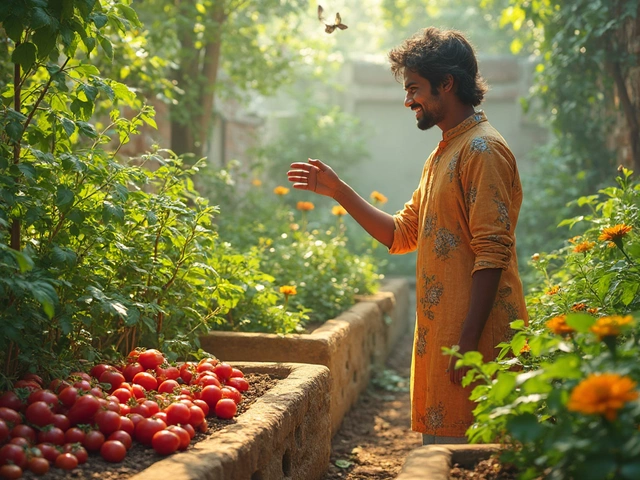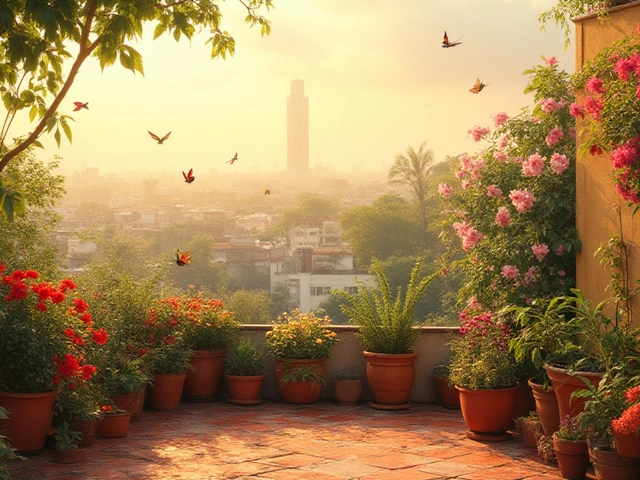Indian Botany: Practical Guides for Indian Gardens
Welcome to the world of Indian botany, where climate, soil, and tradition mix into a unique gardening adventure. Whether you tend a balcony, a backyard, or a small farm, the right knowledge can turn a patch of soil into a thriving green space. Below you’ll find straight‑forward tips that fit India’s diverse weather zones and common plants.
Seasonal Planting & Watering Tips
India’s flowering calendar is a game‑changer. For most regions, the best months for blooms are March‑May and September‑November. Align your sowing with these windows and you’ll see faster growth and richer colors. When it comes to watering, drip irrigation is king. Burying drip lines 6‑8 inches deep protects them from extreme heat while delivering water right to the root zone. A shallow burial can lead to evaporation losses; a deeper burial may restrict airflow. Adjust depth based on soil type – lighter loams need a touch more depth than heavy clay.
If you’re on a balcony, vertical gardens are a lifesaver. Use lightweight pots, tie‑back trellises, and a simple drip system to keep water where it belongs. Remember to let tap water sit for 30 minutes before using it on delicate houseplants; this lets chlorine evaporate and prevents leaf burn.
Crop & Flower Highlights
Broccoli farming in India is gaining traction. Start with well‑drained loam, add organic compost, and space plants 45 cm apart. This spacing prevents disease spread and encourages strong heads. For rice growers, the secret lies in soil choice – fine, clay‑rich paddies hold water longer, boosting yields. Aim for a pH of 5.5‑6.5 and add a dash of lime if the soil is too acidic.
When it comes to flowers, the marigold holds a special place as India’s luckiest bloom. It thrives in full sun and tolerates poor soils, making it perfect for beginners. For a faster‑growing tree, try the Indian jasmine (Jasminum grandiflorum); it blossoms within two years and fills the garden with scent.
Companion planting, also known as “sister plants,” can improve health and yield. Pair tomatoes with basil to deter pests, and grow legumes alongside cereals to fix nitrogen naturally. This simple trick cuts down on fertilizer costs and reduces pest pressure.
Eco‑friendly practices are easy to adopt. Turn kitchen waste into compost, mulch garden beds to retain moisture, and choose native species that need less water. These steps not only save resources but also attract beneficial insects that keep pests at bay.
Finally, keep an eye on the market if you’re growing for sale. Broccoli prices peak in winter, while rice demand spikes during festive seasons. Timing your harvest to meet these peaks can boost profits without extra effort.
Indian botany is all about matching the right plant to the right place and using smart, low‑cost techniques. Follow these tips, experiment a bit, and watch your garden flourish all year round.
Rare Flowers Found Only in India: Unveiling the Subcontinent's Unique Blooms
Explore India's unique flowers found nowhere else on Earth. Dive into their history, where to see them, their uses, and why they matter.
About
Sustainable Gardening
Latest Posts


Best Plants for Indian Summer: Top Choices for Surviving Heat & Drought
By Alden Thorne Jul 9, 2025

Should I Mist My Bonsai Tree? The Real Deal on Misting Bonsai
By Alden Thorne Jun 13, 2025

Can You Grow Rice in America?
By Alden Thorne Feb 28, 2025

